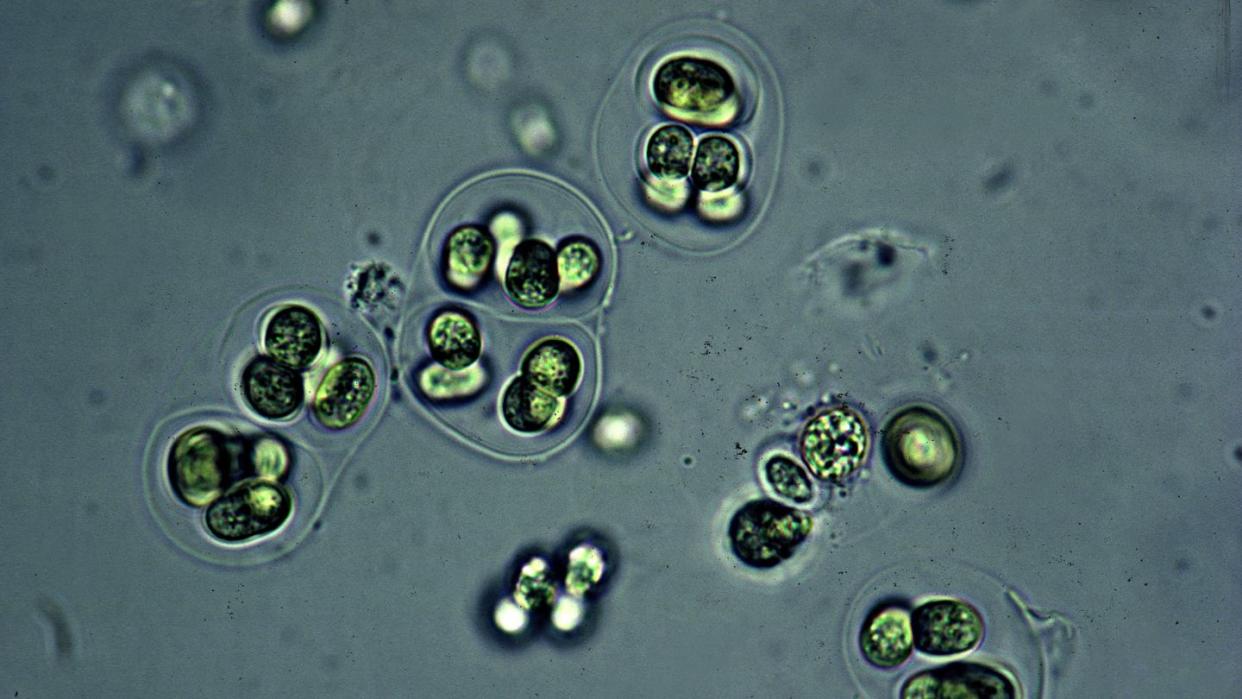Scientists Solved a 1.75-Billion-Year Mystery About How Life Materialized on Earth

"Hearst Magazines and Yahoo may earn commission or revenue on some items through these links."
Fossils preserved within ancient rock may prove that photosynthesis started way earlier than we thought.
If correctly dated to 1.75 billion years ago, the new find provides additional insight into early Earth ecosystems.
Scientists believe the study of additional fossils could yield more clues about the origins of life.
Researchers on a quest to understand the origins of life just learned a little lesson about photosynthesis from 1.75 billion years ago.
In a new study published in Nature, a team of researchers claim that microfossils found in the desert of north Australia show off the earliest known signs of photosynthesis. And that could means a better understanding of how all of life could have begun.
These microfossils are remnants of a type of organism called cyanobacteria, which experts believe have been around for as long as 3.5 billion years (though the oldest confirmed fossil examples are from about 2 billion years ago). At some point in their evolution, some varieties of these organisms developed thylakoids—structures within cells in which photosynthesis occurs—which may have allowed them to contribute huge amounts of oxygen to Earth’s atmosphere through photosynthesis in what has become known as the Great Oxidation Event.
These new findings offer up the oldest evidence of photosynthesis found to date. The researchers claim that their discovery extends the fossil record by at least 1.2 billion years, and that these very first photosynthesizing cells appeared roughly 1.75 billion years ago.
“[This discovery] allows the unambiguous identification of early oxygenic photosynthesizers and a new redox proxy for probing early Earth ecosystems,” the authors wrote in the paper, “highlighting the importance of examining the ultrastructure of fossil cells to decipher their paleobiology and early evolution.”
These exciting fossils were discovered in ancient rocks—located in the McDermott Formation in northern Australia—and feature the pigment chlorophyll, which allows organisms to absorb the sunlight during photosynthesis. The presences of chlorophyll was enough for researchers to determine that photosynthesis had occurred in these little compartments, which would mean that the process evolved much earlier than was previously demonstrable.
And that would likely help explain the Great Oxidation Event. Evidence in the fossil record shows us that there was a huge jump in atmospheric oxygen levels around 2.4 billion years ago. It was critical to the existence of life on Earth as we know it, and while scientists aren’t sure what caused it, one theory is that this is around the time that photosynthetic organisms evolved into being and began to exist in large numbers. By dating fossilized cells with the necessary components for photosynthesis to as close to that oxygen-flourishing event as possible, researchers are able to move one step closer to understanding the role of oxygen—and the cells helping create it—in the origins of life on Earth.
Of course, the next step is more research. Specifically, the team intends to examine fossil cells across the world to see just how well they match up with this new timeline.
“We predict,” the authors wrote, “that similar ultrastructural analyses of well-preserved microfossils might expand the geological record of oxygenic photosynthesizers and of early, weakly oxygenated ecosystems in which complex cells developed.”
Take a deep breath, and dive on into the science.
You Might Also Like

